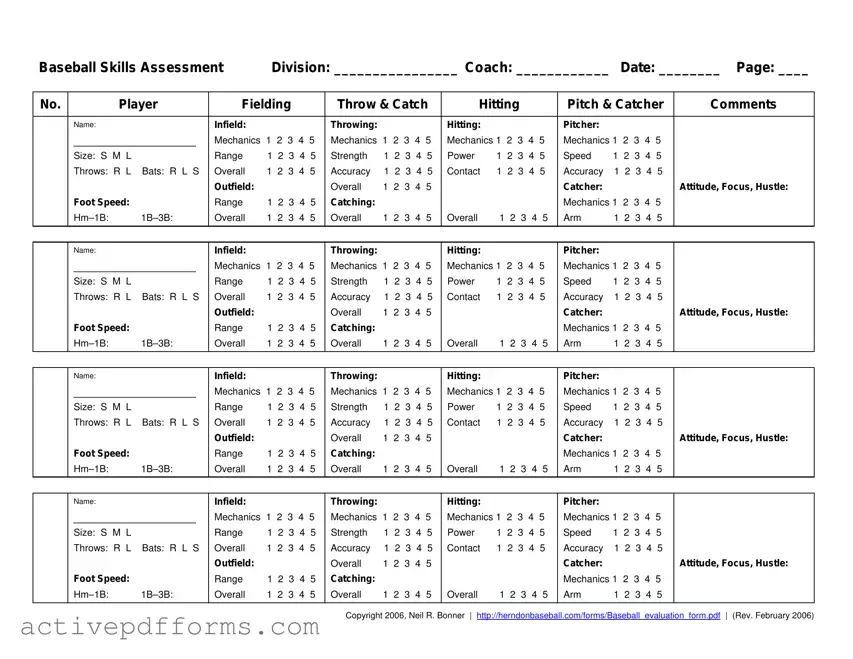Free Baseball Assessment PDF Template
The Baseball Assessment Form serves as a critical tool for coaches to evaluate and document the skill levels of players across various aspects of baseball, including fielding, throwing, hitting, and pitching. This structured approach aids in identifying promising talent for All-Star travel teams and can be adapted for use in house leagues to ensure a fair and comprehensive player evaluation during tryouts. By systematically scoring players using a five-point scale, coaches are equipped to make informed decisions that contribute to the formation of competitive and balanced teams.
Edit Baseball Assessment Now

